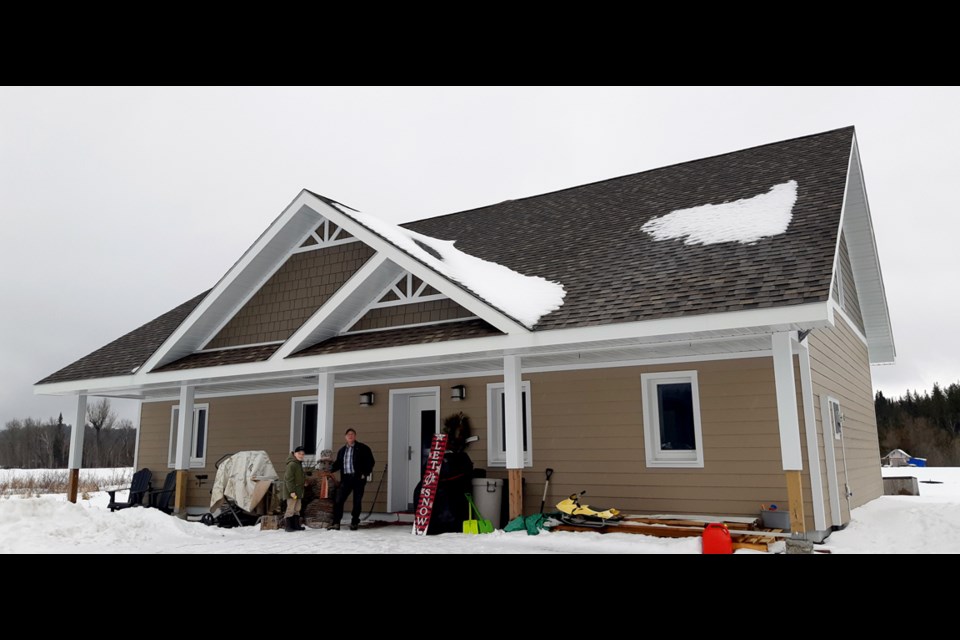Naomi Grant and Christine Caveen
In ten years, all new homes will be passive houses.
Wanda Martin describes her Radiance Cohousing passive house in Saskatoon, Sask., as quiet, warm, and full of light.
“It is sunny and -47 with the wind chill today, and we are feeling great. The air quality is good too. We have a cost savings on the overall bills, where we used to pay for natural gas and electricity, now we just pay electricity,” Martin said.
Greater Sudbury’s draft Community Energy and Emissions Plan aims for all new houses to be Passive Houses by 2030.
“Space and water heating account for 65 per cent of the emissions from residential and commercial buildings in our community. Residential dwellings alone were responsible for 22 per cent of total greenhouse gas emissions in 2016,” says Jennifer Babin-Fenske of EarthCare Sudbury.
A passive house uses orientation and design to take advantage of natural heating and cooling. With very high insulation and airtightness, minimal additional heating is needed. A passive house can easily be converted to a net-zero building that generates as much energy as it uses.
Bernard Proulx has built two passive houses east of Sudbury, and has plans for more.
“Passive houses are the way to go,” he said.
Passive House Canada estimates an additional building cost of 10 per cent, but Proulx found no real difference.
“What you pay more for insulation, you save in not installing a home heating/cooling system,” he explained, adding that labour costs may be five per cent more. This is offset by up to 90 per cent less energy needed for heating/cooling.
The 2,000-square-foot house Proulx built for his son relies almost entirely on the sun for heating even on the coldest days, with a 2kw electric fireplace available when needed.
In Canada, there are already passive houses, passive apartment buildings, passive commercial buildings and passive public buildings. Proulx said regulations and political will would make it possible for all new builds to be certified as passive.
Canada plans to have net-zero energy ready building codes by 2030, and provinces are expected to update their codes accordingly.
Municipalities also have a role. Vancouver’s Zero Emissions Building Plan sets limits on emissions and energy use that reduce over time, transitioning to zero emissions buildings in all new construction by 2030.
Toronto’s Green Standard also uses stepped mandatory energy efficiency standards, with rewards for voluntarily meeting higher standards.
Pierre Harrison and Susanne Leffler built their own passive design straw bale home near Wanup and discovered that without supportive policies building sustainably can take determination.
“The city made it very difficult for us to get our building permit,” Harrison said. “But we persevered and are now enjoying the benefits of living in a straw bale off-grid house. Living in a straw bale house is very calming, relaxing and cozy.”
Whether your motivation is sustainability, living conditions or living expenses, if you are looking for a new home, you can make size, energy efficiency, heating needs and source, and walkability part of your choice. If you are involved in building a new home, you can ask the architect/builder to follow the most energy efficient standards possible.
Back at Radiance Cohousing, residents share tasks, electric cars, bulk purchases, and garden space watered by a large rain tank. Neighbours look after each other's pets or homes when they're away, plan times to cook, eat, play board games or work on projects together, and borrow and lend things they need.
As we change the way we build our homes, we have the opportunity to think beyond energy efficiency standards to wider questions of sustainability, social ties, and affordable housing.
Are you building?
Available certifications for energy efficiency and sustainability include Living Building Challenge, Zero Carbon Building Standard, Passive House certification, LEED certification, and energy certified and energy star homes.
Passive House Canada offers training in Passive House design and construction.
Canadian Mortgage and Housing Corporation offers a refund of up to 25% on the CMHC mortgage loan insurance premium when you buy or build an energy-efficient home, or you buy an existing home and make energy-saving renovations.
Like the sound of Cohousing? There are two fledgling Cohousing projects in Greater Sudbury: Sweetfern Cohousing (all ages), and Senior Cohousing.
Naomi Grant and Christine Caveen, on behalf of Coalition for a Liveable Sudbury.
Coalition for a Liveable Sudbury is grassroots group of citizens and community groups who share a vision of Sudbury as a green, healthy and engaged community. For additional information on some of the homes in this column, and on a net zero future for Greater Sudbury, see liveablesudbury.org/net_zero_sudbury.
